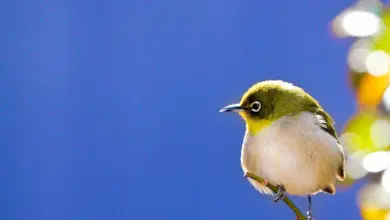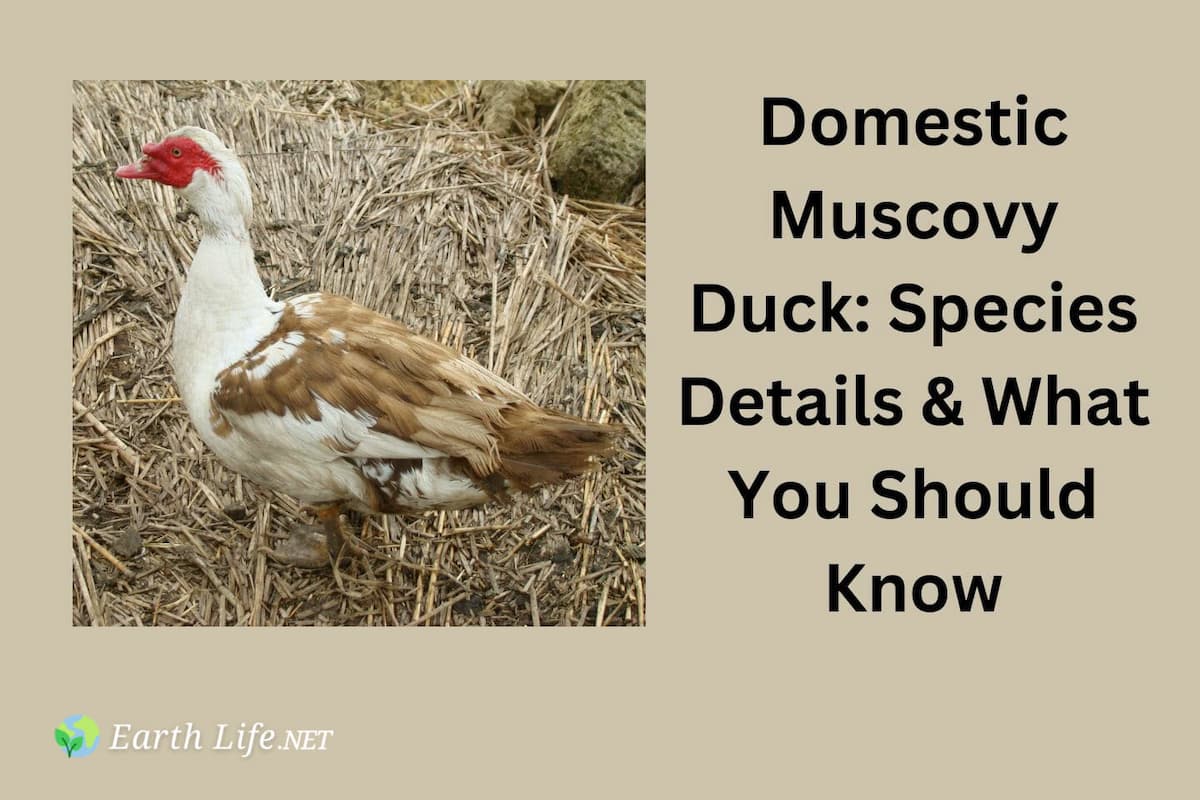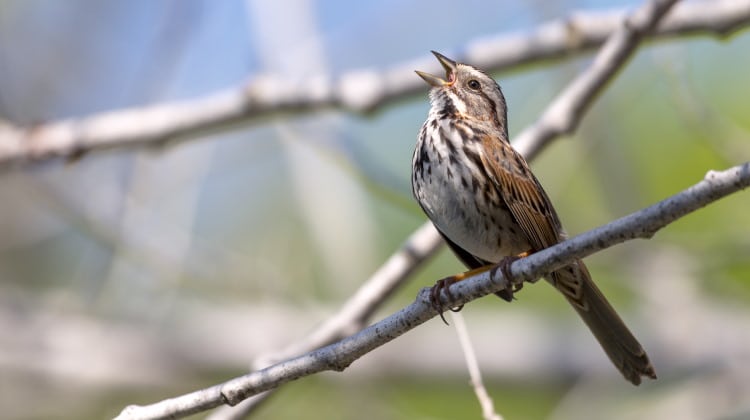Grebes
Grebes
Grebes are members of the Podicipediformes order, a widely distributed order of freshwater diving birds, some of which visit the sea when migrating and in winter.
Grebes are members of the Podicipediformes order, a widely distributed order of freshwater diving birds, some of which visit the sea when migrating and in winter. This order contains only a single family, the Podicipedidae, containing some 20 species in 6 extant genera.
Podicipediformes are small to medium-large in size, have lobed toes, and are excellent swimmers and divers. However, they have their feet placed far back on the body, making them quite ungainly on land. They leave the water only to nest, walking very short distances upright like penguins. They can run for a short distance, but often fall over.
Grebes have narrow wings, and some species are reluctant to fly; indeed, two South American species are completely flightless. They respond to danger by diving rather than flying, and are in any case much less wary than ducks.
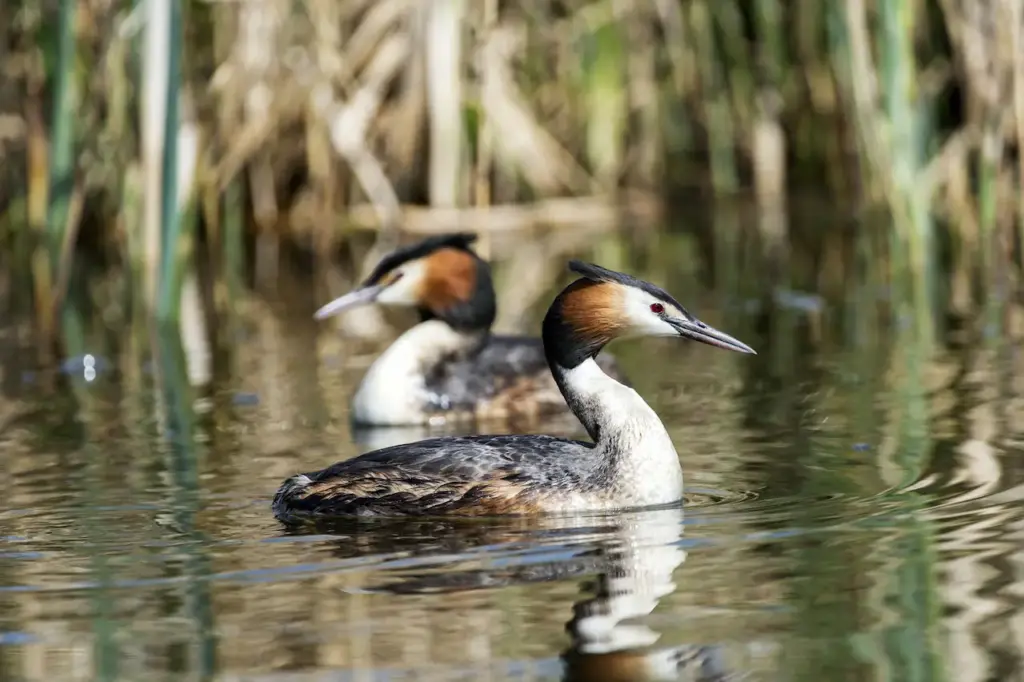
However, the North American and Eurasian species are all, of necessity, migratory over much or all of their ranges, and those species that winter at sea are also seen regularly in flight. Even the small freshwater Pied-billed Grebe of North America has occurred as a transatlantic vagrant to Europe on more than 30 occasions.
Bills vary from short and thick to long and pointed; the feet are always large, with broad lobes on the toes and small webs connecting the front three toes. The hind toe also has a small lobe. Recent experimental work has shown that these lobes work like the hydrofoil blades of a propeller.
Grebes have unusual plumage. It is dense and waterproof, and on the underside the feathers are at right-angles to the skin, sticking straight out to begin with and curling at the tip. By pressing their feathers against the body, grebes can adjust their buoyancy. Often, they swim low in the water with just the head and neck exposed.
In the non-breeding season, grebes are plain-colored in dark browns and whites. However, most have ornate and distinctive breeding plumages, often developing chestnut markings on the head area, and perform elaborate display rituals. The young, particularly those of the Podiceps genus, are often striped and retain some of their juvenile plumage even after reaching full size.
When preening, grebes eat their own feathers, and feed them to their young. The function of this behaviour is uncertain but it is believed to assist with pellet formation and to reduce their vulnerability to gastric parasites.
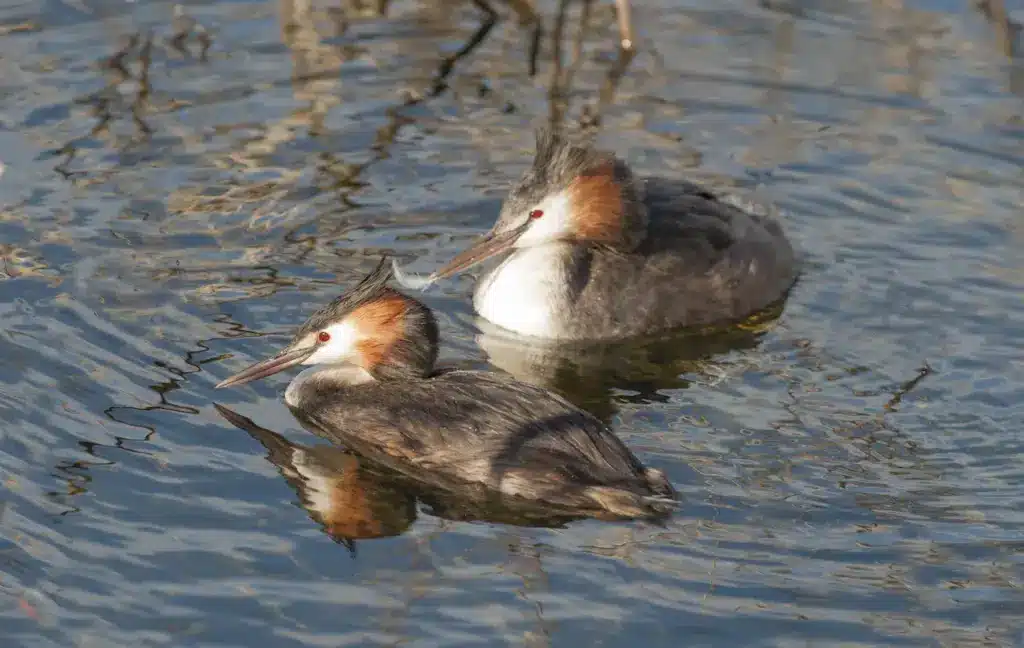
Systematics
The grebes are a radically distinct group of birds as regards their anatomy. Accordingly, they were at first believed to be related to the loons, which are also foot-propelled diving birds. However, as recently as the 1930s (Stolpe 1935), this was determined to be a crass example of convergent evolution by the strong selective forces encountered by unrelated birds sharing the same lifestyle at different times and in different habitat.
The cladistics vs. phenetics debate of the mid-20th century unfortunately revived scientific interest in generalizing comparisons. As a consequence, the discredited grebe-loon link was discussed again. This even went as far as proposing monophyly for grebes, loons, and the toothed Hesperornithiformes (Cracraft, 1982). In retrospect, the scientific value of the debate lie more in providing examples that a cladistic methodology is not incompatible with an overall phenetical scientific doctrine, and that thus, simply because some study “uses cladistics”, it does not guarantee superior results.
Molecular studies such as DNA-DNA hybridization (Sibley and Ahlquist, 1990) and sequence analyses fail to resolve the relationships of grebes properly due to insufficient resolution in the former and long-branch attraction in the latter. Still – acually because of this – they do confirm that these birds form a fairly ancient evolutionary lineage (or possibly one that was subject to selective pressures down to the molecular level even), and they support the non-relatedness of loons and grebes.
Currently, the available evidence is being reassessed. Combining data from the different analyses seems to point at flamingos being the closest relatives of the grebes, a suggestion that has been proposed every now and then in the past – mainly because both groups are aquatic birds of very obscure relationships -, but generally ignored. Indeed, careful analyses of morphological characters (i.e., excluding known homoplasies) and more comprehensive molecular data suggest that this relationship is the most promising hypothesis to date. In addition, it has been shown that the Anaticola bird lice shared by flamingos and waterfowl, which were at one time used to upport a close relationship between the latter two (which is now deemed utterly incorrect), are actually closely related to the grebes’ Aquanirmus lice and almost certainly switched hosts from flamingos to waterfowl, not the other way around as it was usually assumed (Johnson et al. 2006).
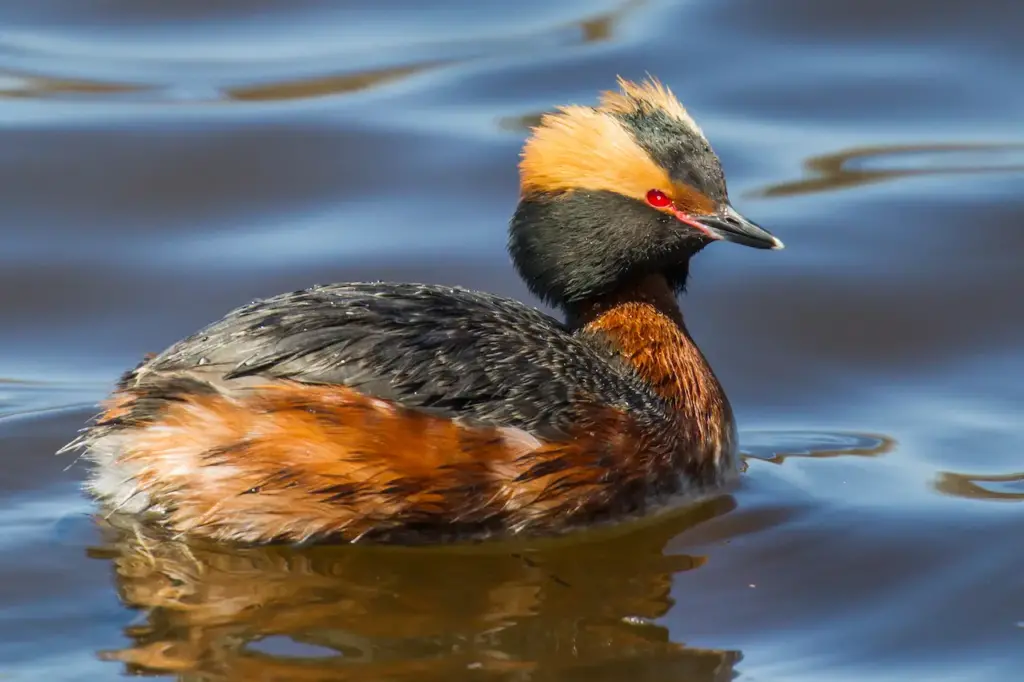
Genera and species
- Genus Tachybaptus
- Little Grebe, Tachybaptus ruficollis
- Australasian Grebe Tachybaptus novaehollandiae
- Madagascar Grebe, Tachybaptus pelzelnii
- Alaotra Grebe (Rusty Grebe), Tachybaptus rufolavatus – probably extinct (late 1980s)
- Least Grebe, Tachybaptus dominicus
- Genus Podilymbus
- Pied-billed Grebe, Podilymbus podiceps
- Atitlán Grebe, Podilymbus gigas – extinct (1989)
- Genus Rollandia
- White-tufted Grebe, Rollandia rolland
- Titicaca Flightless Grebe, Rollandia microptera : This grebe is found on freshwater lakes on the altiplano of Peru and Bolivia, including Lake Titicaca. It is classified as Endangered, with a population of less than 750.
- Genus Poliocephalus
- Hoary-headed Grebe, Poliocephalus poliocephalus
- New Zealand Dabchick, Poliocephalus rufopectus, or Weweia, is endemic to New Zealand.
- Genus Podiceps
- Red-necked Grebe, Podiceps grisegena
- Great Crested Grebe, Podiceps cristatus
- Slavonian Grebe or Horned Grebe, Podiceps auritus
- Black-necked Grebe or Eared Grebe, Podiceps nigricollis
- Colombian Grebe, Podiceps andinus – extint (1977) : The Colombian Grebe (Podiceps andinus), was a grebe found in the Bogotá wetlands in the Eastern Andes of Colombia. The species was still abundant on Lake Tota in 1945. The decline of the Colombian grebe is attributed to wetland drainage, siltation, pesticide pollution, disruption by reed harvesting, hunting, competition, and predation of chicks by rainbow trout (Salmo gairdneri) (del Hoyo et al. 1992). However, the main cause of the decline is considered to be the drainage of wetlands, siltation, and subsequent eutrophication of Lake Tota, which destroyed the open, submergent Potamogeton vegetation and resulted in the formation of a dense monoculture of Elodea (Varty et al. 1986, Fjeldsa 1993, as cited in O’Donnel and Fjeldsa 1997). By 1968 it had declined to approximately 300 birds. Only two records of this bird made in the 1970s; one seen 1972, the last confirmed record was in 1977 when three birds were seen. Intensive studies in 1981 and 1982 failed to find the species.
- Great Grebe, Podiceps major
- Silvery Grebe, Podiceps occipitalis
- Junin Flightless Grebe, Podiceps taczanowskii : The Junin Flightless Grebe Podiceps taczanowskii, also known as the Puna Grebe, is a grebe found only on Lake Junin in the highlands of Junin, west-central Peru. The current population is estimated at less than 250. The scientific name commemorates the Polish zoologist Władysław Taczanowski, author of Ornithology of Peru (1884-86).
- Hooded Grebe, Podiceps gallardoi : The Hooded Grebe (Podiceps gallardoi), is a medium-sized grebe found in the southern region of South America. It grows to about 34 cm in length, and is black and white in color (body). It is found in isolated lakes in the most remote parts of Patagonia, and spends winters along the coast of the same region.
- Genus Aechmophorus
- Western Grebe, Aechmophorus occidentalis
- Clark’s Grebe, Aechmophorus clarkii


